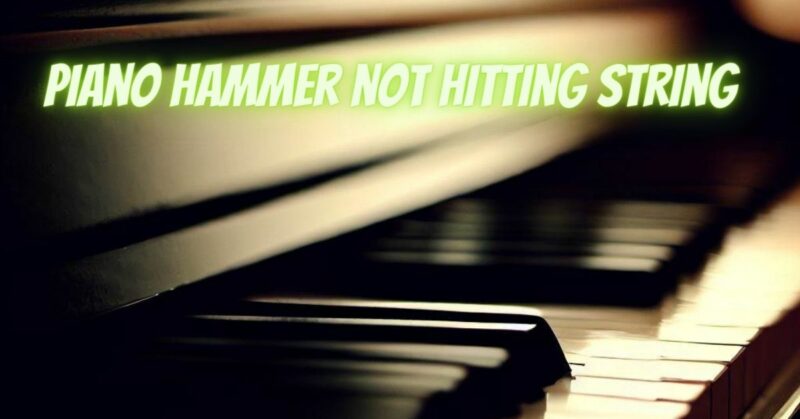A well-functioning piano relies on the precise interaction between the keys, hammers, and strings. When a piano hammer fails to strike the string properly, it can result in a muffled or muted sound, disrupting the instrument’s tone and playability. In this article, we will explore some common reasons why a piano hammer may not be hitting the string and offer practical solutions to help resolve the issue.
- Hammer Misalignment:
a. Over time, the hammers can become misaligned due to regular playing or mechanical adjustments.
b. Misalignment can cause a hammer to strike the string inadequately or miss it entirely. A qualified piano technician can carefully realign the hammers to ensure proper contact with the strings.
- Hammer Worn or Misshapen:
a. The hammers of a piano are subject to wear and tear over time.
b. If a hammer becomes worn, grooved, or misshapen, it may not hit the string accurately. The piano technician can inspect and reshape the hammers or, if necessary, replace them to restore proper striking action.
- Damaged or Broken String:
a. A broken or damaged string can prevent a hammer from striking it effectively.
b. Inspect the strings carefully for any signs of breakage or damage. If a string is found to be faulty, it should be replaced by a professional piano technician.
- Regulation Issues:
a. Piano regulation refers to the adjustment of various mechanical components to ensure proper touch and responsiveness.
b. If the piano has not been regulated correctly, it can lead to hammer-string misalignment. A skilled technician can assess and adjust the regulation to ensure optimal performance.
- Felt Voicing Issues:
a. The felt on the hammers can undergo changes over time, affecting their ability to strike the strings effectively.
b. Voicing involves reshaping and adjusting the felt to achieve the desired tonal characteristics. If the hammers are poorly voiced or the felt is compressed, a piano technician can address the voicing to improve the hammer-string contact.
Conclusion:
When a piano hammer fails to hit the string properly, it can significantly impact the instrument’s tone and playability. By understanding the common causes of this issue, such as hammer misalignment, worn hammers, damaged strings, regulation problems, or felt voicing issues, you can take appropriate action to address the problem. Seeking the expertise of a qualified piano technician is crucial in diagnosing and resolving the specific cause of the hammer-string misalignment. With proper attention and maintenance, you can restore your piano’s ability to produce clear and resonant tones, ensuring a rewarding playing experience.


